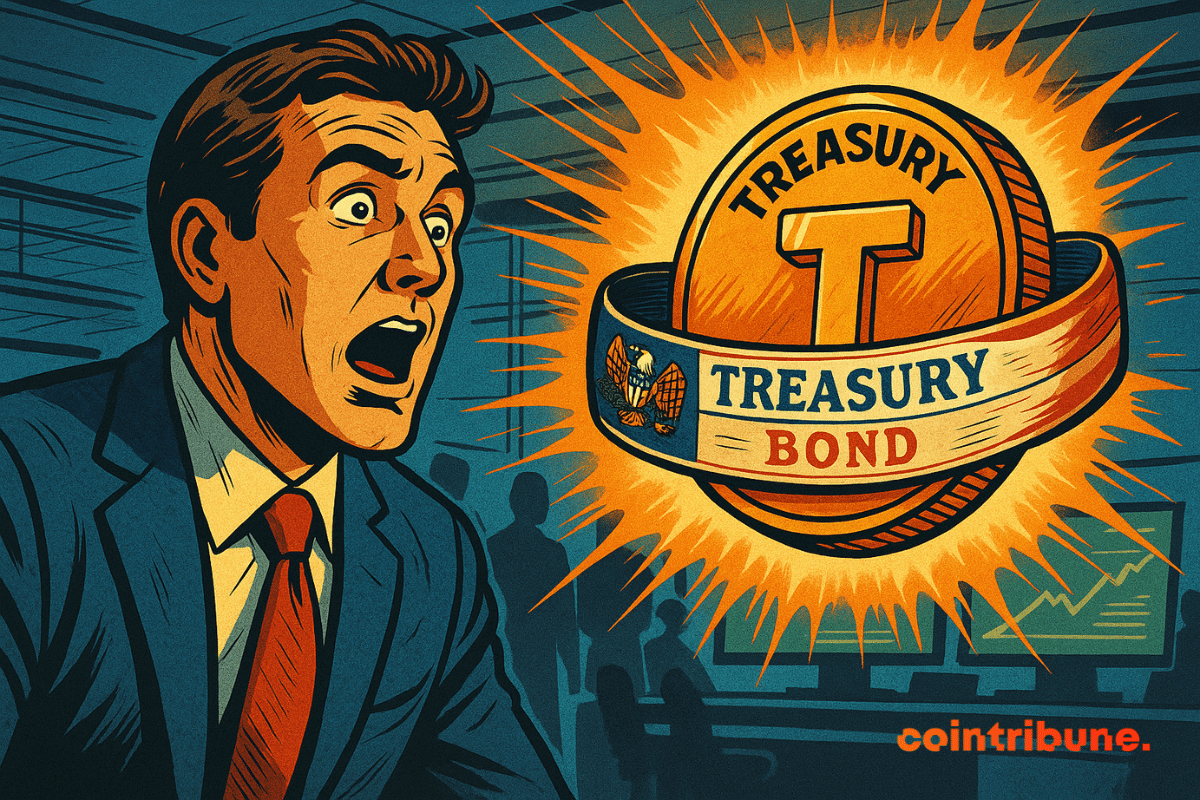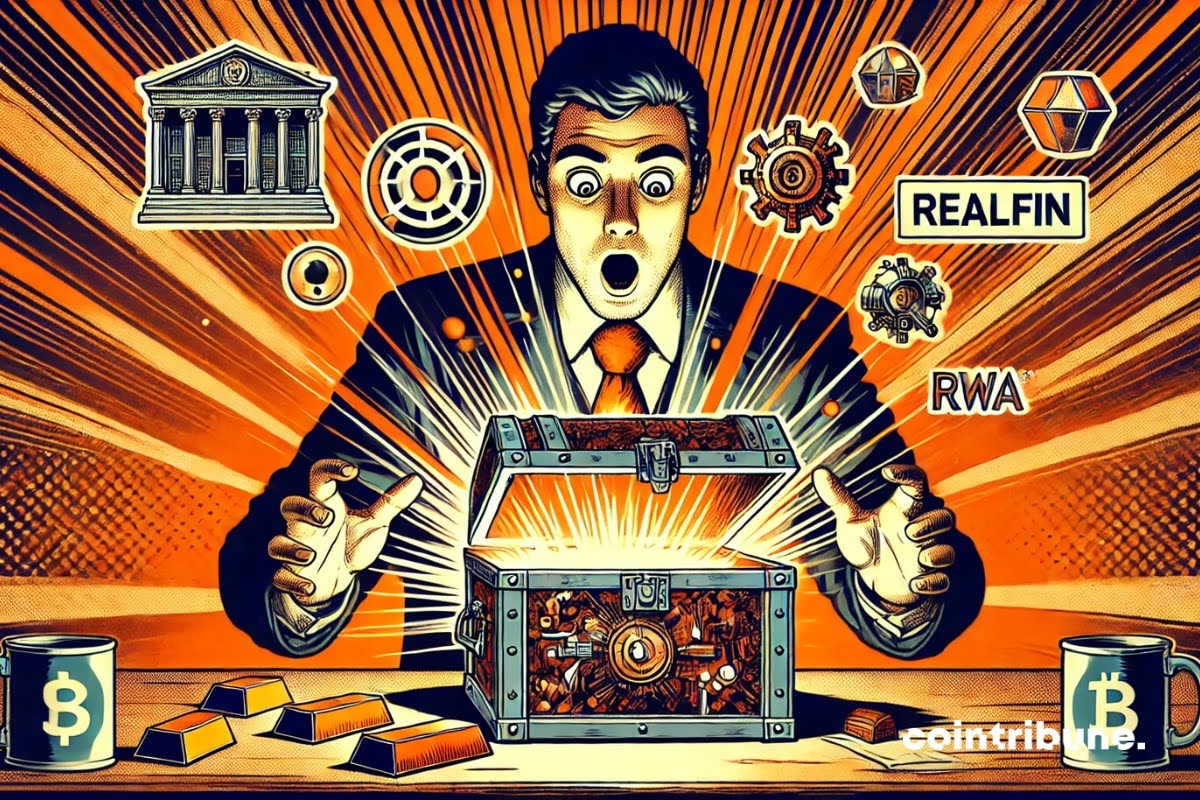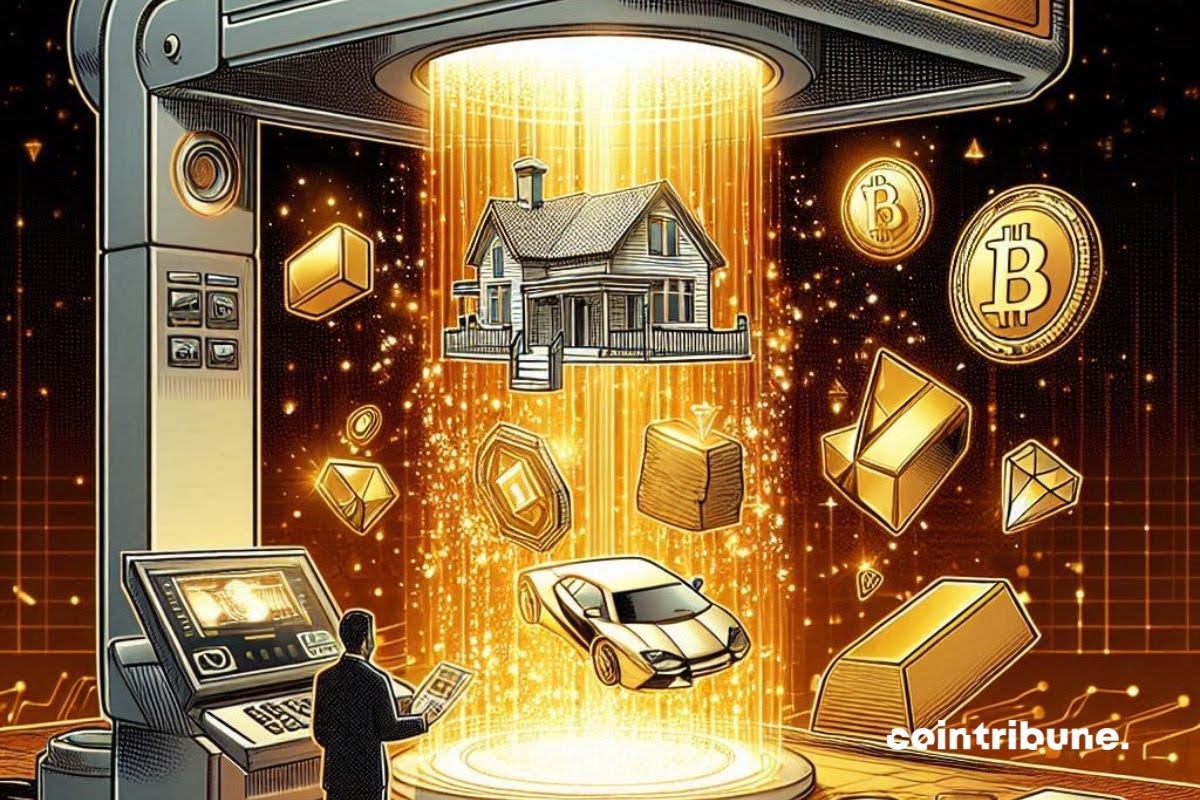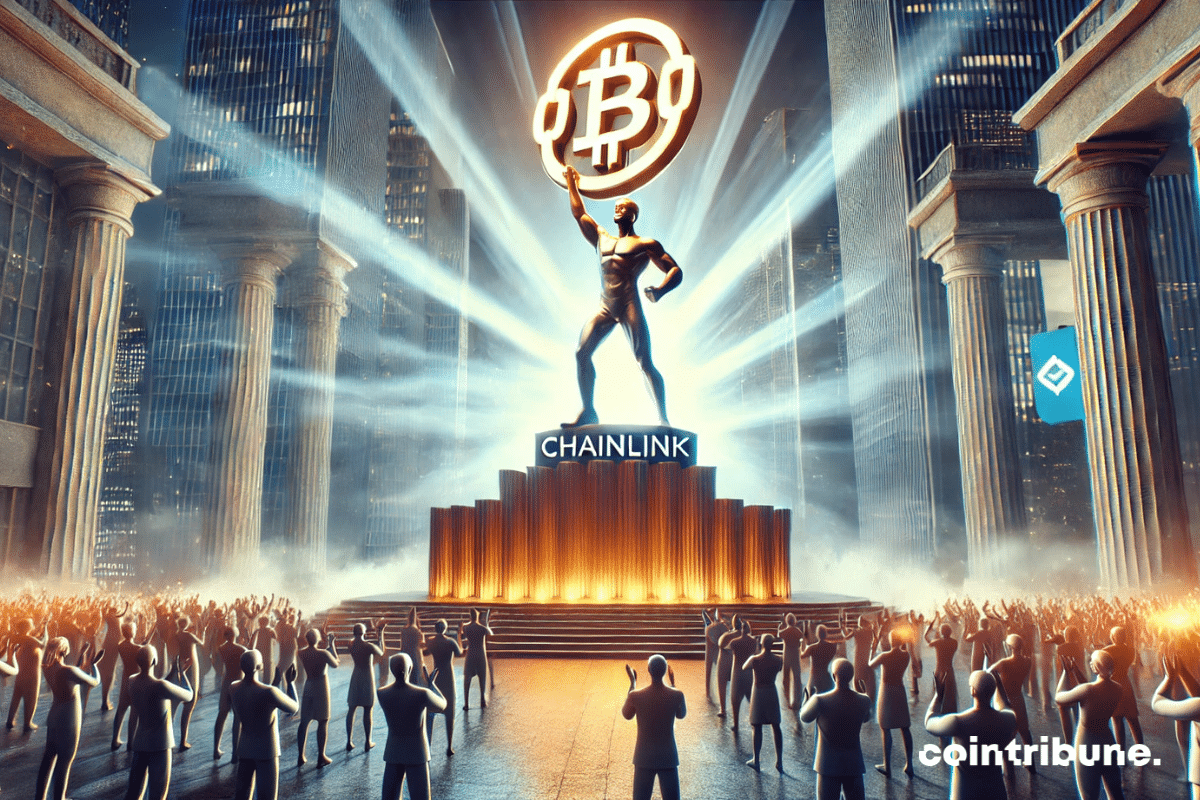The BIS and the Fed unveil an innovative toolkit for tokenization. Discover all the details in this article!
Theme Tokenization
On Tuesday, the 13th, VanEck launched the VanEck® Treasury Fund, Ltd. (VBILL). This is the first real-world asset (RWA) tokenization fund from the global manager. This was achieved through a partnership with Securitize, an RWA platform with total assets under management (AuM) of $3.9 billion as of May 12th. The volume is expected to increase soon, as VBILL is designed to provide investors with secure, real-time access to assets backed by the United States Treasury.
JPMorgan is building a crypto bridge between TradFi and DeFi. A tokenized transaction that shakes up banks, while some tech giants look elsewhere, cautious and indifferent.
Every year, billions lie dormant in fixed assets: real estate, raw materials, receivables. The economy suffers, investment stagnates, and inclusion decreases. What if the solution came from Web3? Real believes that everyone should own a share of the real world. Through its dedicated blockchain, it finally makes tokenization fluid, transparent, and inclusive.
An exciting rumor is sweeping through Web3: Pokémon may land on SUI! Immediate result: the SUI token has skyrocketed by 60%, reigniting a glimmer of hope in the decentralized gaming universe. This sector, long hindered by archaic and off-putting interfaces, is being reborn like a digital phoenix. Thanks to optimized blockchains and the arrival of visually stunning AAA games, the future looks electrifying. In short, it's here: Web3 gaming is no longer a promise… it’s a reality to embrace right now. The journey is just beginning. And what about you, are you getting on board or staying on the platform?
2025 marks a turning point for Real-World Assets (RWA) in decentralized finance. Long regarded as the missing link between the real economy and Web3, RWAs are finally gaining momentum thanks to blockchain infrastructures designed for the concrete use cases of trade financing. Among the pioneers of this convergence are Credefi and XDC Network, who are announcing a strategic alliance to democratize access to tokenized credit for European SMEs, with real guarantees, stable returns, and end-to-end regulatory compliance.
The recent scandal surrounding Mantra (OM) has shaken the crypto sphere, rekindling deep concerns about governance and transparency in the realm of real-world assets (RWA). However, beyond the turmoil, some players like RealFin see in this crisis an opportunity: to demonstrate that another model is not only possible but necessary.
Real estate remains an essential investment sector, but it presents high entry barriers. Purchasing properties requires significant capital and complex procedures. Today, decentralized finance (DeFi) and blockchain are disrupting this model by offering more accessible solutions. RealT applies these innovations to real estate investment by enabling the purchase of property shares in the form of tokens. This model facilitates access to ownership and enhances the liquidity of real estate assets. Thanks to DeFi, investors can use their tokens to generate additional returns. RealT thus positions itself as a bridge between traditional real estate and decentralized finance, creating new opportunities for investors.
Real estate investment attracts many investors due to its stability and appreciation potential. However, access to this market remains restrictive due to high costs and complex administrative procedures. The tokenization of real estate simplifies these barriers by making the purchase and management of properties more accessible. RealT allows investors to acquire fractions of properties through blockchain technology. This approach offers increased liquidity and passive income in stablecoins. This article explores how RealT works, the steps to purchase real estate tokens, as well as the profitability and successful investment case studies.
Real estate investment remains a preferred option for securing capital. However, financial and administrative constraints make this market difficult to access. Purchasing real estate requires substantial capital and lengthy processes, hindering many investors. Blockchain is revolutionizing this sector by enabling the tokenization of real estate assets. This innovation facilitates the acquisition and management of properties by eliminating intermediaries. RealT leverages this technology to make real estate investment more flexible and accessible. Its solution combines transparency, liquidity, and automation of rental income. This article analyzes the limitations of the traditional real estate market, the role of blockchain, and the advantages of RealT as a modern alternative.
Real estate investment attracts many savers. However, financial and administrative barriers make access difficult. Buying a property requires significant capital, rigorous management, and market knowledge. Fractional investment offers an alternative and allows one to acquire shares of a property with reduced capital. It is a model that simplifies management and offers greater accessibility. RealT stands out in this field. This platform uses blockchain technology to make real estate investment more transparent and flexible. Its model allows purchasing fractions of properties starting from a few dozen dollars while generating regular rental income. Let’s review this form of investment through this article.
Cryptos have revolutionized investing, but their high volatility worries many investors. Diversification becomes a necessity to limit risks associated with market fluctuations. Real estate offers a stable alternative, but access remains complex for crypto users. RealT simplifies this approach by integrating tokenization and decentralized finance. The platform allows for easy investment in real estate and receiving income in stablecoins. This solution increasingly attracts investors looking to secure part of their capital. This article analyzes the reasons behind RealT's success and its benefits for the crypto community.
Real estate investment attracts many investors, but it comes with significant constraints. The required capital is often high, the administrative procedures are complex, and reselling a property takes time. Blockchain is transforming this market by facilitating access to real estate through tokenization. RealT offers an innovative solution that allows individuals to acquire shares in real estate properties in the form of tokens. This approach simplifies investment, provides more liquidity, and ensures passive income in stablecoins. This article details how RealT works, real estate tokenization, its advantages over traditional purchasing, and the security guarantees offered to investors.
In a context where traditional finance struggles to meet the needs for returns and accessibility, RealT continues to shape the story of tokenization. After democratizing fractional real estate investment, the platform is launching a new, unprecedented product: the Factoring Token, a tokenized financial asset offering up to 12% annual returns. An innovation tailored for savvy crypto investors and enthusiasts of alternative finance.
The global economy is undergoing a major transformation with the advent of blockchain, and real estate is not escaping this revolution. Deloitte predicts that tokenized real estate will reach $4 trillion in assets by 2035. This impressive figure highlights a profound shift in real estate investment, making it more accessible and liquid. Tokenization is redefining the rules of the real estate market, opening up new possibilities for a more decentralized global economy.
Stock tokenization, still a modest segment, could experience spectacular expansion in the coming years. According to several industry leaders, this market is expected to surpass $1 trillion in market capitalization in the medium term, driven by growing institutional interest.
In February 2025, RealT celebrates its sixth anniversary and continues its international expansion with a major new milestone: the launch of its first property in Colombia on February 20, 2025. Following its successful establishment in the United States and Panama, this new acquisition confirms the platform's development strategy in the Latin American markets.
The line between traditional finance and the world of crypto continues to blur. Franklin Templeton, a giant in asset management with $1.6 trillion under management, takes another step towards integrating blockchain and announces the extension of its tokenized US money market fund (FOBXX) on Solana. This strategic move, which comes against a backdrop of rising tokenized financial assets, could represent a turning point in the institutional adoption of this technology. After already launching this fund on Ethereum, Avalanche, and several layer 2 blockchains, the American company is now betting on Solana, an infrastructure that has managed to appeal beyond its initial reputation as a playground for memecoins.
Finance is playing acrobatics: Ondo Finance unveils its blockchain Ondo Chain, a bridge between the Wall Street barons and the DeFi pirates. Get the popcorn ready, it's going to shake things up.
Blockchain-based finance is evolving rapidly, providing innovative solutions to democratize access to investments and financing. Among the challenges still present in this ecosystem, the integration of real-world assets (RWA) remains a central issue. The collaboration between Lumia and Credefi aims to address these challenges by combining layer 2 (L2) infrastructure and expertise in RWA-backed loans.
The year 2024 has already shaken up the crypto universe. From unexpected regulatory advances to encouraging signals from the White House, the sector has proven its resilience, despite significant challenges. Now, the spotlight turns to 2025. This period promises an explosive mix of innovation, maturity, and legal clarity. But are you really ready to seize these new opportunities related to Bitcoin and emerging trends?
Fidelity Digital Assets predicts massive adoption of Bitcoin by nation-states in 2025. Discover the analyses and forecasts.
The convergence between artificial intelligence (AI) and asset tokenization is set to redefine the global financial landscape in 2025, according to Hunter Horsley, CEO of Bitwise. This major transformation should particularly benefit small businesses, paving the way for a new "long-tail capital market."
Blockchain, like a Swiss watch, measures the economy to the thousandth. Goodbye artistic blur, hello fractional wealth and disruptive promises.
Global economic uncertainties are forcing institutions to thoroughly rethink their investment strategies. In this context, decentralized finance (DeFi) is emerging as a credible and visionary alternative for reinventing traditional financial models. In recent years, major advancements have transformed DeFi into a sophisticated ecosystem, far beyond early technological experiments. Thus, the development of bitcoin staking, the tokenization of real assets, and the integration of autonomous artificial intelligences herald a new era for this rapidly expanding sector.
The world of blockchain continues to profoundly transform digital finance, but not all projects succeed in combining innovation and relevance. Among the most remarkable initiatives, Chainlink, the decentralized oracle network, stands out as a key pillar in the field of Real-World Assets. According to the latest data from the analysis platform Santiment, Chainlink dominates its sector thanks to particularly intense development activity. Thus, over the last thirty days, it recorded 394 notable events on GitHub, surpassing renowned competitors like Synthetix and Dusk Foundation, which recorded 176.6 and 34.7 events respectively.
Chainlink (LINK) soars to $25.32 and crypto oracles celebrate: the "bank coin" is here, XRP has become just a banking joke.
For years, the crypto sector has accustomed us to rapid changes, but 2024 marks an unprecedented shift with the extraordinary rise of memecoins. Originally regarded as curiosities or digital jokes, these assets have now exploded onto the global financial scene, attracting a massive wave of investors. With a market capitalization that has surged by nearly 400%, memecoins are no longer mere cultural phenomena, but genuine economic forces in their own right.
The blockchain has already disrupted the global financial landscape, and this is just the beginning. According to experts, the tokenization of real-world assets (RWA) could explode to reach the colossal figure of $30 trillion by 2030. And who will be the architects of this revolution? Financial institutions, of course. But…
The Swift and UBS giants, armed with Chainlink, attempted a blockchain twist to make tokenized finance dance.





























